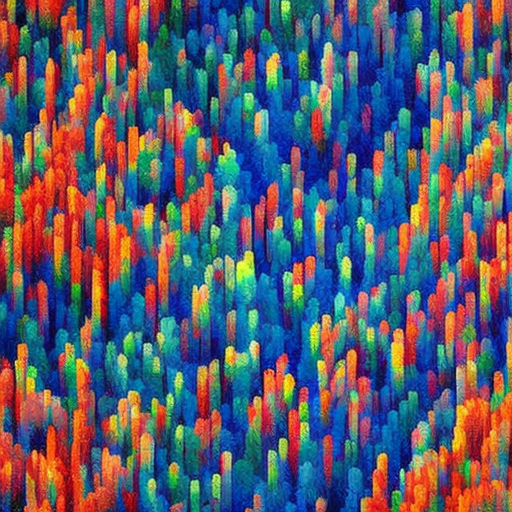Digital Art: A Comprehensive Overview
Digital art refers to any form of artistic expression that utilizes digital technology as a primary medium. This includes various forms such as digital painting, computer-generated imagery (CGI), digital photography, and interactive installations. The advent of digital technology has revolutionized the art world, enabling artists to explore new creative possibilities and reach wider audiences.
The Evolution of Digital Art
Digital art has its roots in the 1960s, with the emergence of computer graphics and the development of early digital imaging tools. Artists such as Frieder Nake and Georg Nees were pioneers in using computers to create visual art. However, it was not until the 1980s and the widespread availability of personal computers that digital art began to gain popularity.
Techniques and Tools
Digital artists employ a range of techniques and tools to create their work. Digital painting involves using software programs that simulate traditional painting techniques, allowing artists to create brush strokes and blend colors digitally. CGI involves the use of 3D modeling and animation software to create lifelike virtual environments and characters. Digital photography involves capturing images using digital cameras and manipulating them using software programs.
Advantages of Digital Art
Digital art offers several advantages over traditional art forms. Firstly, it provides artists with greater flexibility and control over their work. Digital tools allow for easy experimentation, enabling artists to quickly try out different techniques and make adjustments as needed. Additionally, digital art can be easily reproduced and shared, making it more accessible to a wider audience.
Challenges and Criticisms
Despite its many advantages, digital art also faces challenges and criticisms. Some argue that the use of digital tools can lead to a loss of the tactile and physical qualities associated with traditional art forms. Others question the authenticity and originality of digital art, as it can be easily replicated and manipulated. Furthermore, the rapid advancement of technology poses challenges for digital artists, as they must constantly adapt to new software and hardware.
Digital Art in the Contemporary Art World
Digital art has gained significant recognition in the contemporary art world. Many museums and galleries now feature digital art exhibitions, and digital artists are increasingly being included in major art events and biennials. The rise of the internet and social media has also provided digital artists with new platforms to showcase and sell their work.
Interactive Installations and Virtual Reality
One of the most exciting developments in digital art is the emergence of interactive installations and virtual reality (VR) experiences. These immersive artworks engage viewers in a participatory manner, allowing them to interact with the artwork and become part of the creative process. VR technology has opened up new possibilities for artists, enabling them to create virtual worlds and experiences that blur the boundaries between art and technology.
The Future of Digital Art
As technology continues to advance, the future of digital art looks promising. The integration of artificial intelligence (AI) and machine learning into artistic processes opens up new avenues for creativity. AI-generated art, where algorithms create original artworks, is already gaining attention in the art world. Additionally, advancements in virtual and augmented reality technologies will likely lead to new forms of immersive and interactive digital art experiences.
In conclusion, digital art has transformed the art world, offering artists new tools and techniques to explore their creativity. While it faces challenges and criticisms, digital art continues to gain recognition and evolve with advancements in technology. As we move forward, the boundaries between traditional and digital art are likely to blur further, creating exciting possibilities for artists and audiences alike.












